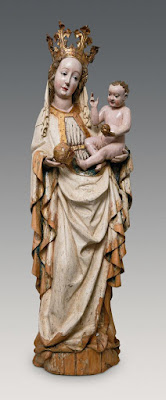| The Calvinist church of Marosszentimre (Sântimbru) in Transylvania |
I would like to start this post by a poem written by my grandfather, Zoltán Jékely, in 1936. The translation included here is by Bernard S. Adams.1
| A marosszentimrei templomban Fejünkre por hull, régi vakolat, így énekeljük a drága Siont: egér futkározik a pad alatt s odvából egy-egy vén kuvik kiront. Tízen vagyunk: ez a gyülekezet, a tizenegyedik maga a pap, de énekelünk mi százak helyett, hogy hull belé a por s a vakolat, a hiúban a denevér riad s egy-egy szúvas gerenda meglazul: tizenegyedikünk az árva pap, tizenkettedikünk maga az Úr. Így énekelünk mi, pár megmaradt - azt bünteti, akit szeret az Úr -, s velünk dalolnak a padló alatt, kiket kiirtott az idő gazul. | In Marosszentimre Church As crumbling plaster falls upon our heads, Thus we the praises of dear Zion sing: Beneath the pews mice scurry from their nests, An ancient company of owls take wing. We in the congregation number ten, Eleven if we reckon in the priest, But when we sing, we sound a hundred men. Down pour the plaster and the dust; The bats are startled in their attic roost; Worm-eaten rafters weakened even more. Eleventh is our solitary priest, The twelfth among us is the Lord himself. And so we sing, the few that still remain —The Lord exacts a price from him that loves— And those whom wicked time from us has ta’en Join in our psalmody beneath the floor. |
On its most simple level, this poem expressed what is an ever-growing problem of abandoned churches in Transylavania. In several areas of Transylvania, Hungarian population has drastically decreased in a process which had speeded up since the middle of the 19th century. After the Treaty of Trianon (1920), when Hungary ceded Transylvania to Romania, this process reached a dramatic scale, especially in southern Transylvania (the area around Gyulafehérvár cathedral, on which see my earlier post). In a place like Marosszentimre, where my grandfather could write about a Calvinist congregation of ten people, today there is practically no Hungarian congregation. Unlike Hungarians, the Romanian population is Eastern Orthodox, and they have built their own new churches in Marosszentimre and similar places. As a result, there are a number of virtually abandoned medieval churches throughout Transylvania. Managed by the Hungarian Catholic or Calvinist churches, sometimes there is no money for even the most basic maintenance of these structures, and with no locals to carry out simple repairs, many of these churches are virtually on the brink of collapse. The Romanian government or its monument protection agency similarly pays little attention to these places.






